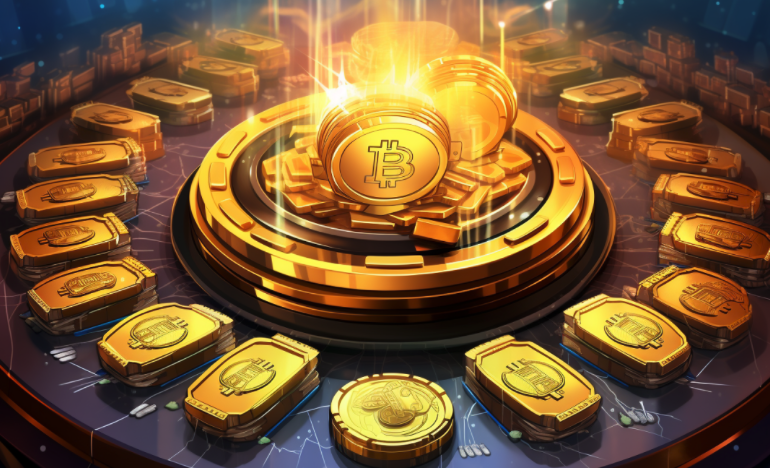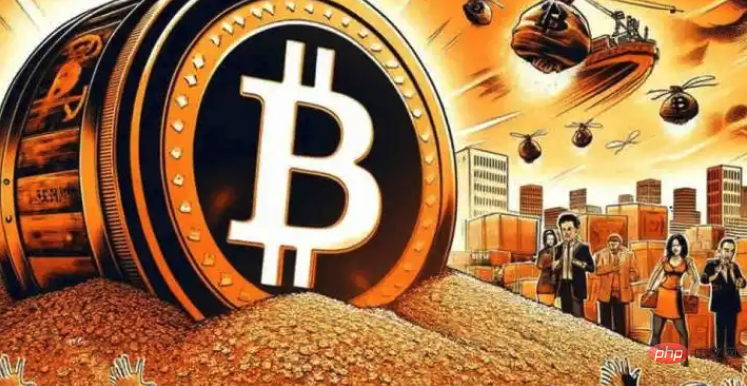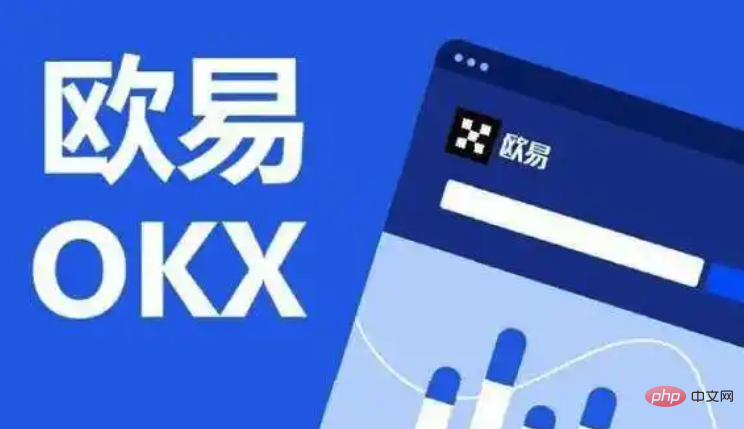Why is Bitcoin called Big Pie? Top 10 Bitcoin Exchange Recommendations
Dec 14, 2024 am 09:44 AM"Big Pie" is a slang term for Bitcoin, and there are three theories about its origin. First, the English abbreviation of Bitcoin "BTC" is homophonic to "big cake"; second, the logo of Bitcoin is a round golden pattern, similar to a cake; third, the early mining difficulty of Bitcoin was relatively low, and one Bitcoin is not difficult, it is as easy as dividing a pie. When it comes to Bitcoin exchanges, there are many options on the market, but the top ones include: Binance, Huobi, OKX, Matcha, Binance US, Gemini, Kraken, Coinbase Pro, Bitstamp, and Bittrex. These exchanges offer a wide range of cryptocurrency trading pairs, security safeguards, and liquidity to meet the needs of different investors.

Why is Bitcoin called Big Pie?
Bitcoin is called "big pie" mainly because of its unique round logo. The logo consists of an orange circle on a white background containing the Bitcoin symbol "?".
Origin of the flatbread name
The round shape of the Bitcoin logo is reminiscent of pizza. In 2010, an early Bitcoin enthusiast named Laszlo Hanyecz purchased two pizzas for 10,000 Bitcoins. The transaction is believed to be the first real-world transaction using Bitcoin, and has been dubbed "Bitcoin Pizza Day" as a result.
The Bitcoin logo quickly became known as “Pizza Coin” due to its resemblance to a pizza. Later, the name was shortened to "Pie" because it sounded simpler and easier to remember.
Other Possible Meanings
In addition to similar shapes, the flatbread name may also have the following meanings:
- Value High: Bitcoin is considered a high-value digital asset, so it is associated with the term "pie" to represent its value.
- Circular Economy: Bitcoin transactions form a cycle in which users can buy and sell Bitcoin for any amount, which is related to the circular shape of the "pie".
- Network Effects: The Bitcoin network continues to grow in size and number of users, making it a growing pie.
It is worth noting that "pie" is only an informal nickname for Bitcoin and does not belong to its official name. In formal settings and documents, Bitcoin is often referred to as "Bitcoin" or "BTC".

Detailed explanation of each exchange
1. Binance: industry leader, diverse services
Founded in 2017, Binance is the world’s largest cryptocurrency exchange with more than 120 million registered users. Binance offers a wide range of trading pairs, innovative products and services, including spot trading, contract trading, over-the-counter (OTC) trading, lending, staking, and charitable donations. Binance has powerful underlying technology to ensure safe and efficient transactions, and is recognized as a leader in the industry.
2. Huobi: a long-established powerhouse, steady and steady
Huobi was established in 2013 and is one of the earliest cryptocurrency exchanges in China. Huobi is known for its stability and security and has more than 10 million registered users. Huobi provides comprehensive services such as spot trading, contract trading, mining pools and storage, and actively expands into the global market, with branches in Japan, South Korea, Singapore and other places.
3. OKX: a rising star with amazing trading volume
OKX was established in 2017 and is famous for its amazing trading volume. OKX provides a variety of services such as spot trading, contract trading, options trading, lending, staking and cloud computing power, and supports a variety of digital assets. OKX's trading engine is efficient and stable, supports high-frequency trading and hedging strategies, and has attracted many traders and institutional customers.

4. Huobi Global: global strategy, wide coverage
Huobi Global is an international exchange under Huobi, established in 2020. Huobi Global has many branches and users around the world, and its business scope covers more than 100 countries and regions. Huobi Global provides a variety of services such as spot trading, contract trading, over-the-counter trading (OTC), mining pools, staking and storage, and supports a variety of digital assets.
5. KuCoin: an emerging force with frequent innovations
KuCoin was established in 2017. It is an emerging cryptocurrency exchange that focuses on innovation and Known for being close to the community. Paiwang provides services such as spot trading, contract trading, lending, staking and social trading, and has made great achievements in listing new coins. Paiwang has an active community and loyal user base, and is growing rapidly in the global market.
6. Bitfinex: Old Exchange, Rock Solid
Bitfinex was founded in 2012 and is one of the world's leading cryptocurrency exchanges. Bitfinex is known for its security and compliance and has more than 2 million registered users. Bitfinex provides spot trading, contract trading, over-the-counter trading (OTC) and lending services, and supports a variety of digital assets. Bitfinex's trading engine is stable and reliable, and is favored by professional traders.
7. Bitstamp: European veteran, safe and reliable
Founded in 2011, Bitstamp is one of the oldest cryptocurrency exchanges in Europe. Known for its security, compliance and regulatory friendliness, Bitstamp is a partner of traditional financial institutions. Bitstamp provides spot trading, contract trading, over-the-counter (OTC) and staking services, and supports a variety of digital assets. Bitstamp's trading environment is safe and transparent, and is deeply trusted by institutional investors.
8. Kraken: King of Compliance, Striving for Stability
Kraken was founded in 2011 and is the oldest and most reputable cryptocurrency exchange in the United States. one. Kraken is known for its compliance and was the first exchange in the United States to receive a license from the New York State Department of Financial Services (NYDFS). Kraken provides spot trading, contract trading, over-the-counter (OTC) and staking services, and supports a variety of digital assets. Kraken's operations are transparent and compliant, and it is an industry benchmark recognized by regulatory agencies.
9. Dubai Trading Platform ExMarkets: Facing the Middle East, huge potential
Dubai Trading Platform ExMarkets was established in 2022 and is a cryptocurrency exchange oriented to the Middle East. ExMarkets provides services such as spot trading, contract trading, over-the-counter (OTC) trading, lending and staking, and supports a variety of digital assets. ExMarkets is backed by the Dubai Economic Development Authority and aims to promote the development of cryptocurrency in the Middle East.
The above is the detailed content of Why is Bitcoin called Big Pie? Top 10 Bitcoin Exchange Recommendations. For more information, please follow other related articles on the PHP Chinese website!

Hot AI Tools

Undress AI Tool
Undress images for free

Undresser.AI Undress
AI-powered app for creating realistic nude photos

AI Clothes Remover
Online AI tool for removing clothes from photos.

Clothoff.io
AI clothes remover

Video Face Swap
Swap faces in any video effortlessly with our completely free AI face swap tool!

Hot Article

Hot Tools

Notepad++7.3.1
Easy-to-use and free code editor

SublimeText3 Chinese version
Chinese version, very easy to use

Zend Studio 13.0.1
Powerful PHP integrated development environment

Dreamweaver CS6
Visual web development tools

SublimeText3 Mac version
God-level code editing software (SublimeText3)

Hot Topics
 How to get stablecoin USDT for free_Xiaobai stablecoin USDT obtain guide
Jul 15, 2025 pm 11:51 PM
How to get stablecoin USDT for free_Xiaobai stablecoin USDT obtain guide
Jul 15, 2025 pm 11:51 PM
Yes, you can get USDT for free in the following 5 ways: 1. Participate in airdrop tasks on mainstream exchanges, such as registering and giving away, completing novice tasks, and inviting friends to get rewards; 2. Join the blockchain project community and obtain airdrops through Web3 social platform or Twitter/Discord interaction; 3. Participate in the "test network" activity, register the test chain address and simulate the use of DApp to get incentives; 4. Complete tasks on the cryptocurrency navigation platform to receive novice gift packages, participate in sign-in, lottery and other activities; 5. Interact with the content creation and community, and publish original content to obtain USDT rewards from the project party. At the same time, you need to pay attention to security risks, do not fill in private keys, do not believe in scams, and choose mainstream platforms to participate.
 Is the stablecoin USDT a scam? Is the company behind the stablecoin USDT reliable?
Jul 15, 2025 pm 11:57 PM
Is the stablecoin USDT a scam? Is the company behind the stablecoin USDT reliable?
Jul 15, 2025 pm 11:57 PM
USDT is not a scam, but there are risks. 1. Tether provides liquidity in the crypto market by issuing USDT, a stablecoin anchored by the US dollar; 2. The company's background is related to Bitfinex, and has been fined for audit issues but has increased transparency; 3. The reserve assets are mainly US Treasury bonds rather than pure cash, and there are certain financial risks; 4. Face risks such as insufficient audit frequency, centralized control and compliance restrictions; 5. The USDT market is highly accepted, but trust needs to be based on continuous disclosure and compliance operations. Overall, USDT is trustworthy but does not equal zero risk, and users should be cautious.
 How to transfer USDT to the exchange of stablecoin_Detailed explanation of USDT exchange trading operations
Jul 15, 2025 pm 11:36 PM
How to transfer USDT to the exchange of stablecoin_Detailed explanation of USDT exchange trading operations
Jul 15, 2025 pm 11:36 PM
To transfer USDT to the exchange for transactions, you must first confirm that the chain type matches, the address is correct, and complete real-name authentication. 1. Register and authenticate the mainstream exchange account with real name; 2. Confirm that the wallet is consistent with the USDT chain type of the exchange (such as TRC20); 3. Obtain the recharge address of the corresponding chain on the exchange and copy it accurately; 4. Initiate transfers from the wallet and pay the corresponding handling fee; 5. After arrival, you can trade in the spot or contract market; 6. Pay attention to checking the address, avoid transferring to the contract address, and give priority to low-processing networks. The entire process is usually completed in minutes, ensuring operational safety is key.
 Is USDT worth investing in stablecoin_Is USDT a good investment project?
Jul 15, 2025 pm 11:45 PM
Is USDT worth investing in stablecoin_Is USDT a good investment project?
Jul 15, 2025 pm 11:45 PM
USDT is not suitable as a traditional value-added asset investment, but can be used as an instrumental asset to participate in financial management. 1. The USDT price is anchored to the US dollar and does not have room for appreciation. It is mainly suitable for trading, payment and risk aversion; 2. Suitable for risk aversion investors, arbitrage traders and investors waiting for entry opportunities; 3. Stable returns can be obtained through DeFi pledge, CeFi currency deposit, liquidity provision, etc.; 4. Be wary of centralized risks, regulatory changes and counterfeit currency risks; 5. In summary, USDT is a good risk aversion and transitional asset. If you pursue stable returns, it should be combined with its use in financial management scenarios, rather than expecting its own appreciation.
 Is USDC safe? What is the difference between USDC and USDT
Jul 15, 2025 pm 11:48 PM
Is USDC safe? What is the difference between USDC and USDT
Jul 15, 2025 pm 11:48 PM
USDC is safe. It is jointly issued by Circle and Coinbase. It is regulated by the US FinCEN. Its reserve assets are US dollar cash and US bonds. It is regularly audited independently, with high transparency. 1. USDC has strong compliance and is strictly regulated by the United States; 2. The reserve asset structure is clear, supported by cash and Treasury bonds; 3. The audit frequency is high and transparent; 4. It is widely accepted by institutions in many countries and is suitable for scenarios such as DeFi and compliant payments. In comparison, USDT is issued by Tether, with an offshore registration location, insufficient early disclosure, and reserves with low liquidity assets such as commercial paper. Although the circulation volume is large, the regulatory recognition is slightly low, and it is suitable for users who pay attention to liquidity. Both have their own advantages, and the choice should be determined based on the purpose and preferences of use.
 How to exchange USDT for stablecoin USDT into cash_USDT withdrawal tutorial
Jul 15, 2025 pm 11:54 PM
How to exchange USDT for stablecoin USDT into cash_USDT withdrawal tutorial
Jul 15, 2025 pm 11:54 PM
USDT cash exchange needs to be operated through a trading platform that supports fiat currency withdrawal. 1. Prepare a trading platform account that supports fiat currency withdrawal (such as Binance, Ouyi, Huobi, etc.); 2. Complete KYC real-name authentication; 3. Bind bank cards or Alipay and other payment methods; 4. Log in to the account and ensure that USDT is in the fund account or spot account; 5. Enter the OTC or fiat currency area and choose to sell USDT; 6. Set the sales amount and match the buyer; 7. After confirming the other party’s payment, click “Confirm Coin Delivery” to complete the transaction. Withdrawal methods include OTC fiat currency transactions, bank card withdrawals and third-party payments, among which OTC is more efficient. Notes include making sure to verify that the money is received before releasing, avoiding frequent large withdrawals, and contacting customer service in time when encountering abnormalities. The key to the entire process is to choose
 Which is better, DAI or USDC?_Is DAI suitable for long-term holding?
Jul 15, 2025 pm 11:18 PM
Which is better, DAI or USDC?_Is DAI suitable for long-term holding?
Jul 15, 2025 pm 11:18 PM
Is DAI suitable for long-term holding? The answer depends on individual needs and risk preferences. 1. DAI is a decentralized stablecoin, generated by excessive collateral for crypto assets, suitable for users who pursue censorship resistance and transparency; 2. Its stability is slightly inferior to USDC, and may experience slight deansal due to collateral fluctuations; 3. Applicable to lending, pledge and governance scenarios in the DeFi ecosystem; 4. Pay attention to the upgrade and governance risks of MakerDAO system. If you pursue high stability and compliance guarantees, it is recommended to choose USDC; if you attach importance to the concept of decentralization and actively participate in DeFi applications, DAI has long-term value. The combination of the two can also improve the security and flexibility of asset allocation.
 How to get stablecoin USDT_Free way to get stablecoin USDT
Jul 15, 2025 pm 11:39 PM
How to get stablecoin USDT_Free way to get stablecoin USDT
Jul 15, 2025 pm 11:39 PM
The ways to obtain USDT include: 1. Purchase through centralized exchanges such as Binance, OKX, etc., which is convenient to operate and supports multiple payment methods; 2. OTC modules are included in the platform for over-the-counter transactions, suitable for large-scale and privacy-conscious users; 3. Use stablecoin exchange platforms or wallets (such as TokenPocket) and decentralized exchanges (such as Uniswap) to achieve cross-chain or cross-currency exchanges; 4. Participate in exchange activities or task platforms to obtain airdrop rewards; 5. Obtain USDT incentives through mining, content creation, community interaction, etc.; 6. Collect USDT directly from other people's wallets, and pay attention to chain type matching to avoid asset loss.





